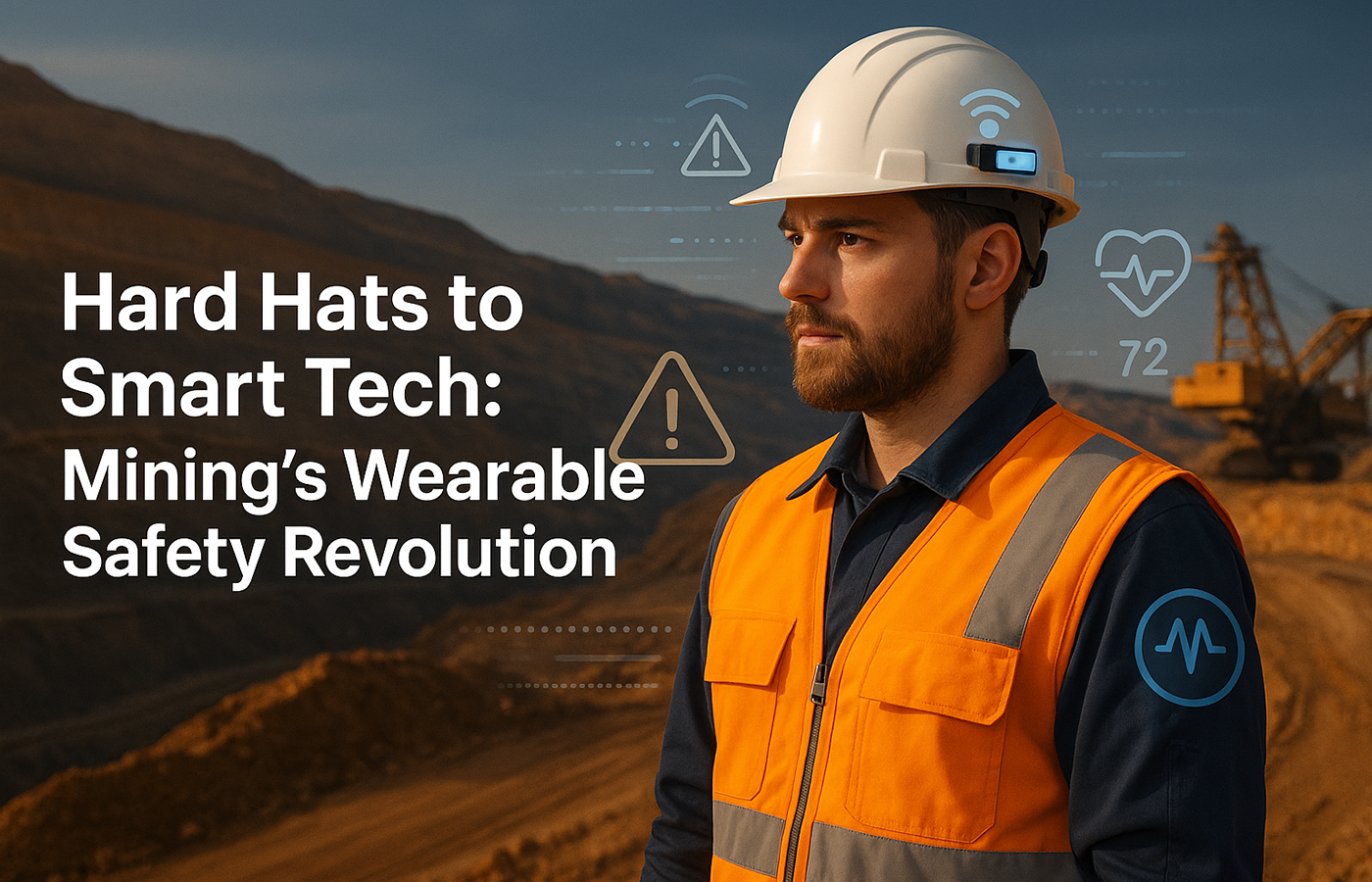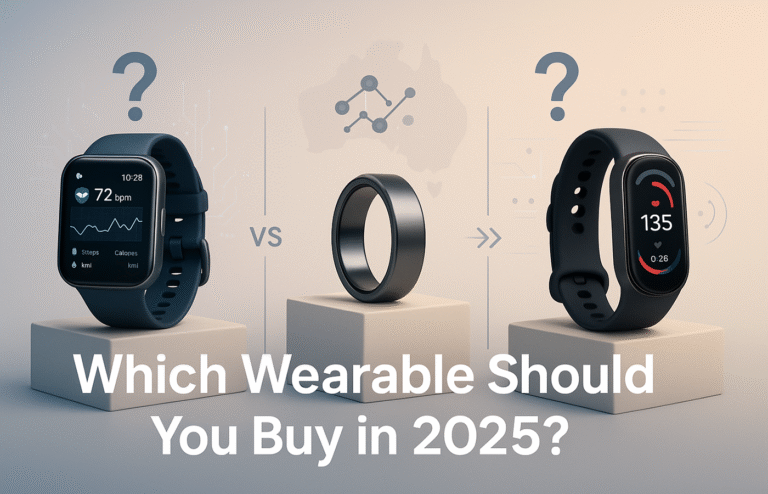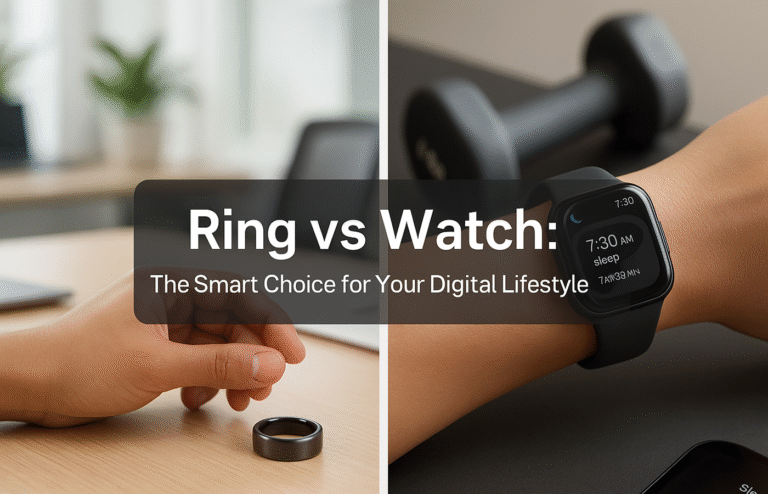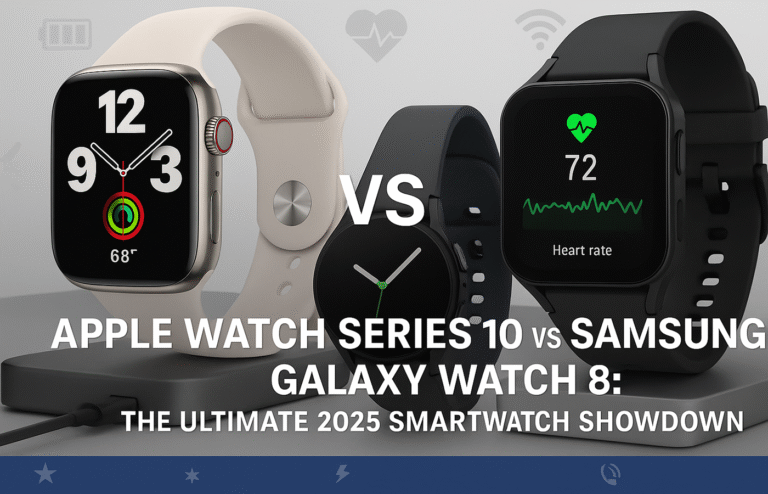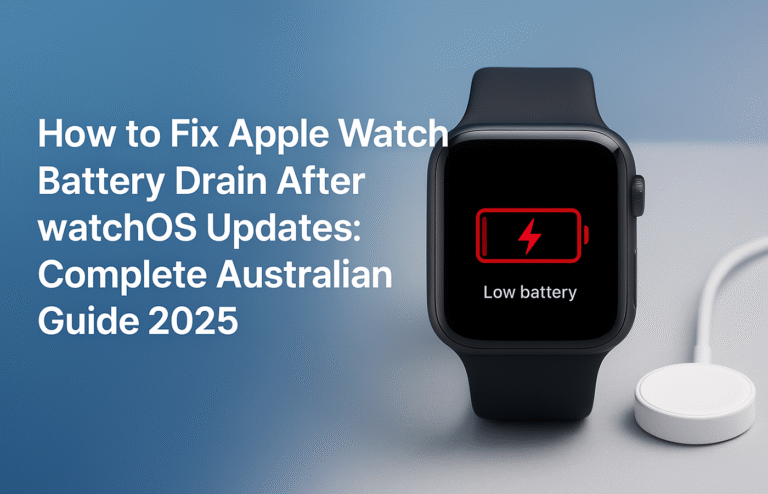Hard Hats to Smart Tech: Mining’s Wearable Safety Revolution in Australia
Australian mining companies are transforming workplace safety through wearable technology, shifting from reactive to predictive safety measures with measurable results across major operations.
Industry Leaders:
● Rio Tinto: Wearable fatigue monitoring systems tracking brain activity patterns for 12-hour shifts
● BHP: Smart caps monitoring drivers’ brainwaves and mixed-reality headsets for maintenance safety
● Fortescue: Environmental monitoring devices tracking air quality and biometric vital signs
Technology Applications:
● Smart helmets with gas sensors, proximity alerts, and integrated communication systems
● Fatigue detection achieving 68% reduction in alarm rates through brain activity monitoring
● Musculoskeletal injury prevention saving projected $26.6 million over ten years
Business Impact:
● Industry spends $46,800 daily on musculoskeletal injuries alone
● ROI often exceeds 300% within three years of comprehensive implementation
Future:
Integration with autonomous mining systems and AI-powered predictive analytics expanding safety capabilities.
Hard Hats to Smart Tech: Mining’s Wearable Safety Revolution
Australia’s mining industry is undergoing a dramatic transformation as companies replace traditional safety equipment with sophisticated wearable technology that monitors everything from worker fatigue to environmental hazards in real-time. From smart helmets that detect dangerous gas levels to devices that predict musculoskeletal injuries before they occur, the sector is embracing wearable innovations that are fundamentally changing how mining operations protect their workforce.
The statistics paint a compelling picture of necessity: the Western Australian Department of Mines, Industry Regulation and Safety estimates that the Australian mining industry spends an average of around $46,800 each day on musculoskeletal injuries alone—the most common type of injury in the sector. Meanwhile, mining maintains the highest occupational fatality rate of all industries globally, making technological intervention not just beneficial but essential.
Leading Australian mining giants including Rio Tinto, BHP, and Fortescue Metals Group are pioneering wearable safety implementations that serve as blueprints for the global industry. These real-world case studies demonstrate how wearable technology is moving from experimental trials to mission-critical safety infrastructure across Australia’s vast mining operations.
The Technology Transformation
From Reactive to Predictive Safety
Traditional mining safety protocols have long relied on reactive measures—responding to incidents after they occur. Wearable technology fundamentally shifts this approach by enabling predictive safety interventions that identify and address risks before accidents happen.
Modern wearable devices continuously monitor physiological indicators, environmental conditions, and behavioural patterns to create comprehensive risk profiles for individual workers. This data enables supervisors to intervene proactively when fatigue levels become dangerous, environmental conditions deteriorate, or workers exhibit behaviours that increase injury risk.
Smart Helmets Leading the Revolution
Smart helmets represent perhaps the most visible transformation in mining wearables. These devices integrate multiple sensors and communication systems into essential protective equipment that workers already wear daily. Advanced smart helmets now include gas sensors that detect dangerous levels of methane, carbon monoxide, and other hazardous gases, real-time cameras providing supervisors with visual monitoring capabilities, proximity sensors warning workers about approaching machinery or vehicles, and integrated communication systems enabling hands-free coordination in challenging environments.
Companies like Guardhat have partnered with IBM to develop helmet systems that detect whether workers are wearing appropriate safety gear for elevated work and automatically prevent access to dangerous areas if safety protocols aren’t followed. When falls occur, these systems immediately notify supervisors and emergency services with precise location data and incident details.
Australian Industry Case Studies
Rio Tinto’s Comprehensive Approach
Rio Tinto has emerged as a leader in wearable safety technology integration across its Australian operations. The company has piloted wearable fatigue monitoring systems that track sleep quality and quantity, providing valuable information to both individual workers and management teams about fatigue-related risks.
These devices monitor brain activity patterns to identify workers at risk of fatigue-related incidents—a critical capability given that many mining operations run 12-hour shifts in remote locations. Rio Tinto’s wearable systems integrate with the company’s broader automation infrastructure, enabling coordinated safety responses across both human workers and autonomous equipment.
The company’s Operations Centre in Perth monitors autonomous operations across 14 different mine sites located up to 1,500 kilometres away. Wearable technology extends this monitoring capability to human workers, creating integrated safety ecosystems where both automated systems and individual workers are continuously monitored for optimal safety outcomes.
BHP’s Technology Integration Strategy
BHP has invested significantly in wearable technology as part of its broader digital transformation strategy. The company introduced Dynamics 365 Remote Assist tools that use IoT sensors on machinery combined with wearable devices to help equipment staff gather critical information remotely, particularly valuable during safety-critical maintenance procedures.
BHP’s implementation includes specialised caps that monitor drivers’ brainwaves to detect signs of fatigue during operation of heavy mining vehicles. These devices feature sensors embedded in helmet strips that continuously monitor electrical brain activity, providing real-time alerts when operators show signs of decreased alertness that could lead to accidents.
The company has also deployed mixed-reality headset devices that assist auto electricians and mechanical fitters on-site, providing augmented reality overlays that enhance safety procedures and reduce the risk of errors during complex maintenance tasks.
Fortescue’s Innovation Focus
Fortescue Metals Group has embraced wearable technology as part of its comprehensive safety strategy, recognising that technological innovation must complement strong safety culture development. The company’s approach focuses on devices that provide immediate safety benefits while building long-term worker acceptance and engagement.
Fortescue’s wearable implementations include environmental monitoring devices that track air quality, temperature, and humidity levels in real-time, biometric monitors that track heart rate, body temperature, and other vital signs during physically demanding work, and location tracking systems that ensure workers can be quickly located in emergency situations across vast mining sites.
Breakthrough Technologies in Mining Wearables
Fatigue Detection and Management
One of the most significant applications of wearable technology in Australian mining involves fatigue detection and management. SmartCap technology, which uses electroencephalography to monitor brain electrical activity, has shown remarkable results in Australian coal mines with a 68% reduction in fatigue alarm rates over one year of deployment.
These systems provide real-time alerts when workers show signs of dangerous fatigue levels, enabling immediate intervention through rest breaks, task rotation, or shift adjustments. The technology proves particularly valuable in fly-in-fly-out operations where workers often experience disrupted sleep patterns due to travel and accommodation changes.
Musculoskeletal Injury Prevention
Soter Analytics has developed one of the smallest wearable devices designed specifically for mining applications, attachable to existing personal protective equipment. This device monitors body posture and movement patterns to identify behaviours that increase musculoskeletal injury risk.
The algorithms learn about individual worker patterns and can predict injury risk based on cumulative stress factors, enabling preventive interventions before injuries occur. Australian strategy firm ACIL Allen estimates that implementing Soter’s wearable technology will result in cost savings of up to $26.6 million to the Australian mining industry over a ten-year period.
Environmental Hazard Monitoring
Environmental wearables specifically monitor hazardous conditions around workers, providing real-time alerts about gas concentrations, temperature extremes, and other environmental dangers. These devices prove essential in underground mining operations where environmental conditions can change rapidly and unpredictably.
Advanced environmental monitoring wearables can detect multiple gas types simultaneously, monitor air quality and particulate levels, track temperature and humidity changes, and provide early warning of geological instability indicators.
Vehicle Operation Safety
Caterpillar’s Cat Smartband represents targeted wearable solutions for specific mining applications. This device monitors driver behaviour when operating mining vehicles, using dashcams and onboard sensors to detect hard braking, vehicle swerves, and other driving anomalies that might indicate operator fatigue or distraction.
The band measures body motion using 3D accelerometers, providing comprehensive monitoring of operator alertness and physical condition during vehicle operation. This technology addresses one of mining’s highest-risk activities, where vehicle accidents can result in severe injuries or fatalities.
Return on Investment and Business Impact
Quantified Safety Improvements
Australian mining companies are achieving measurable safety improvements through wearable technology deployment. SmartCap’s 68% reduction in fatigue alarm rates demonstrates the technology’s effectiveness in addressing one of mining’s most persistent safety challenges.
Beyond fatigue management, companies report significant reductions in musculoskeletal injuries, faster emergency response times, and improved environmental hazard detection. These improvements translate directly into reduced workers’ compensation costs, decreased production downtime, and enhanced regulatory compliance.
Cost-Benefit Analysis
The economic case for wearable safety technology in mining is compelling. With the Australian mining industry spending $46,800 daily on musculoskeletal injuries alone, even modest injury reduction percentages generate substantial cost savings.
Soter Analytics’ projected $26.6 million in cost savings over ten years represents just one technology vendor’s impact. When combined with reduced insurance premiums, decreased regulatory fines, improved productivity, and enhanced worker retention, the return on investment for comprehensive wearable safety programs often exceeds 300% within three years of implementation.
Productivity and Operational Benefits
Wearable technology delivers operational benefits beyond direct safety improvements. Real-time worker monitoring enables optimised task allocation, improved shift planning, and better resource utilisation. Workers equipped with environmental monitoring devices can work safely in previously restricted areas, expanding operational capabilities.
The data generated by wearable devices also supports predictive maintenance programs, equipment optimisation, and process improvements that enhance overall mining efficiency while maintaining safety standards.
Worker Acceptance and Cultural Integration
Overcoming Initial Resistance
Early wearable technology deployments in mining faced significant worker resistance due to privacy concerns, comfort issues, and scepticism about technological solutions. Australian mining companies have learned that successful implementation requires comprehensive change management strategies that address worker concerns proactively.
Successful programs emphasise the personal safety benefits to individual workers rather than focusing solely on company benefits. When workers understand how wearable technology can protect them from injury and help them return home safely each day, acceptance rates improve dramatically.
Training and Support Programs
Leading Australian mining companies invest heavily in training programs that help workers understand and effectively use wearable safety technology. These programs cover device operation, data interpretation, and integration with existing safety procedures.
Peer champion programs, where experienced workers advocate for wearable technology adoption, have proven particularly effective in building acceptance within mining crews. When respected team members demonstrate the value of wearable devices through personal experience, adoption rates accelerate significantly.
Privacy and Data Management
Australian mining companies have addressed privacy concerns by implementing transparent data governance policies that clearly specify how wearable device data is collected, stored, and used. Workers receive regular reports on their personal safety metrics while understanding that data is used primarily for safety improvement rather than performance monitoring.
Successful programs maintain clear boundaries between safety-related data collection and performance evaluation, ensuring that wearable technology supports rather than threatens worker interests.
Technology Evolution and Future Developments
Integration with Autonomous Systems
As Australian mining operations become increasingly automated, wearable technology is evolving to integrate seamlessly with autonomous equipment and systems. Workers equipped with wearable devices can communicate directly with autonomous trucks, drills, and other equipment to coordinate safety protocols automatically.
This integration enables dynamic safety zones around autonomous equipment that adjust based on worker location and activity, ensuring that human workers and automated systems can operate safely in shared environments.
Artificial Intelligence and Predictive Analytics
Advanced AI algorithms are transforming wearable device data into actionable safety insights. Machine learning systems analyse patterns across multiple workers and sites to identify previously unknown risk factors and predict safety incidents with increasing accuracy.
These AI systems continuously improve their predictive capabilities as they process more data, enabling increasingly sophisticated safety interventions and risk management strategies.
Environmental and Sustainability Integration
Next-generation wearable devices will integrate environmental monitoring capabilities that support mining operations’ sustainability goals. Devices will monitor carbon emissions, water usage, and environmental impact metrics alongside traditional safety parameters.
This integration enables mining companies to demonstrate environmental responsibility while maintaining comprehensive safety monitoring, supporting both regulatory compliance and social licence to operate.
Challenges and Implementation Considerations
Technical Infrastructure Requirements
Implementing comprehensive wearable safety systems requires significant technical infrastructure including robust communication networks, data processing capabilities, and integration with existing safety management systems. Australian mining operations often face unique challenges due to remote locations and harsh environmental conditions.
Successful implementations require careful planning of communication networks, power management systems, and device maintenance procedures that can operate reliably in challenging mining environments.
Regulatory Compliance and Standards
Australian mining operations must ensure that wearable safety technology complies with relevant occupational health and safety regulations. This includes device certification, data privacy requirements, and integration with mandatory safety reporting systems.
Companies must also consider how wearable device data integrates with workers’ compensation systems, insurance requirements, and regulatory reporting obligations.
Scalability and Standardisation
As wearable technology adoption expands across Australian mining operations, standardisation becomes increasingly important. Companies are working toward common data formats, interoperability standards, and shared best practices that enable technology sharing and benchmarking across the industry.
The Future of Mining Safety Technology
Australian mining companies are establishing themselves as global leaders in wearable safety technology implementation, creating models that mining operations worldwide are beginning to adopt. The combination of harsh operating conditions, strong safety cultures, and technological innovation makes Australia an ideal testing ground for advanced wearable safety systems.
As these technologies mature and costs decrease, wearable safety devices will transition from premium investments to standard safety equipment across all mining operations. The question for mining companies isn’t whether to adopt wearable safety technology, but how quickly they can implement comprehensive systems that protect their workforce while delivering measurable business benefits.
The transformation from traditional hard hats to smart safety systems represents more than technological advancement—it signifies the mining industry’s commitment to achieving zero harm objectives through innovation, data-driven decision making, and proactive risk management.
For Australian mining operations, wearable safety technology isn’t just about compliance or cost reduction—it’s about fundamentally reimagining how the industry protects the people who power Australia’s resource economy. As these systems continue evolving and expanding, they’re creating safer, more efficient, and more sustainable mining operations that set new standards for the global industry.

